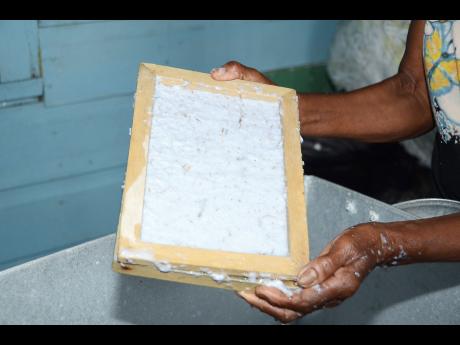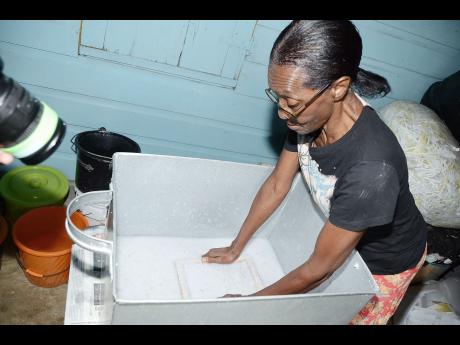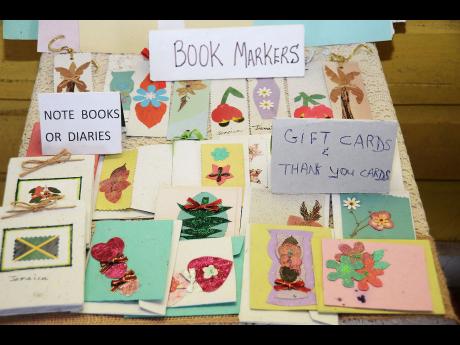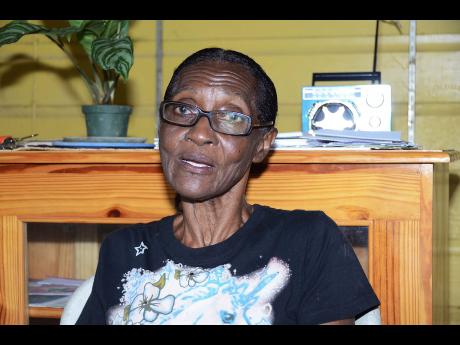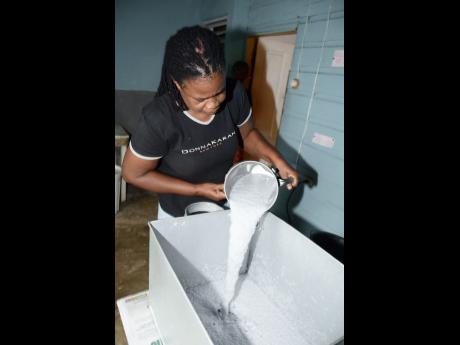Paper making in Portland - Nature Handmade Paper Project
Portland is known for flourishing vegetation, magnificent attractions, and irresistible beaches. But, hidden in Fairy Hill, a cool and quaint community in the parish, is a small group of creative and skilful folks progressively tapping into the paper-making industry with handcrafted paper.
Introduced by the Peace Corps in 1987 and supported by the Dutch government, New York partners of America, and the Social Development Commission (SDC), the paper project began with 12 persons. Of the 12, all being from Fairy Hill and surrounding communities - there was only one male.
The project is spearheaded by Gloria Dorman, who has been performing that role since 1995.
"One day, I was at my house and I was told that there was a Peace Corps group down by the community centre teaching women how to make paper. My friend told me that I should go and I did. [There] I met a gentleman called Boe Noris, and he told me that he wanted women, especially with children and who were not working, to be involved. It was very hard for us [to learn it] and it took up to three weeks for us to make one sheet of paper. But, we went to different workshops and we learnt," Dorman told Outlook.
Since its inception, the project has focused primarily on women. Its aim is to empower and arm women with lifelong skills. Despite its principal emphasis on women, however, men also reap the rewards of the project.
Nature Handmade Paper Project
Today, the soon to be 31-year-old Nature Handmade Paper Project is a true testament of the valuable work that can result from blending recycled paper and nature with creativity.
The environmentally friendly paper-making process, goes through four stages. It begins with blending shredded paper into a pulp, which is then poured into a vat. The next step is the dipping process. At this stage the mould (a frame from which the paper is made) and a deckle (also a frame that has a screen) are used to form the paper. The mould is levelled over the deckle and it is dipped into the pulp. After dipping, the paper is placed on a balanced surface with towels to help absorb excess water. This is called coaching. These are then placed under a presser to release the water, in what is described as the pressing stage. After pressing, the paper is placed in the sun for a few minutes.
As the years went by, the number has gradually dwindled. To date, only five dedicated and determined members are left designing and making paper. Even with this reduction, the trend still stands, with one male. The first male was Dorman's husband, but now he has been replaced by their son.
"Over the years, the project has grown rapidly. After a time, we started teaching children from different schools about the art of paper making. Also, we have been to a lot of interesting fairs [displaying the paper-making process]."
Through teaching the art, the group captured the attention and interest of the Jamaica Cultural Development Commission (JCDC). Under the guidance of the commission, the group moved from making merely paper sheets, to making books.
Diverse Products
"We make note cards, notelets, diaries, guest books, envelopes, and bookmarks. We do not write anything on them, so you can use them for any purpose, whether for birthdays or weddings anniversaries," Dorman told Outlook.
Environmental campaigns and entities in Jamaica welcome the venture of the Fairy Hill residents. The group strictly uses recycled paper materials and plant fibre to recreate appealing and attractive paper. The group obtains plant fibre from several plants including bamboo, almond, banana, mango, and pandanus.
"The different leaves give different patterns. I love the project because it uses natural things and it is very rewarding. We use the things in our home and the rubbish that you throw away," Dorman said with a smile.
Hotels and tourists form the largest sector of the group's market. The group does not cease to help others, as is evidenced by their charitable work where they donate a portion of their proceeds to those in need.
Supporting the Project
The group is supported by several entities in Jamaica including the National Environment and Planning Agency, Environmental Foundation of Jamaica, and the United States Agency for International Development.
In expressing appreciation to the organisations, the group made special mention of the Hotel Mocking Bird Hill in Port Antonio. Thanks to the hotel, the group now owns a sole mechanical presser that cuts the workload in half.
"Before we got the presser, we had to use stones to get the water out of the paper. When we started, we made some thick and heavy so, you could just imagine putting them on stones to press out the excess water. With the stones, it used to take days for the paper to dry, but now it takes about half an hour," Dorman explained.
Going Forward
Moving forward, the group intends to expand the venture. Dorman informed Outlook that the group's ultimate goal is to train others to take over the project. However, by virtue of the youth's reluctance to learn the craft, older folks especially those 35 and older, are the group's target.
"We take on a lot of people from the community and especially the young people, but they are not staying. They say it is messy and some of them even take away the things (products). Sometimes they come and promise that they will come back, but they don't. We would like to encourage the youths to stay, but we don't know what to do," she lamented.

